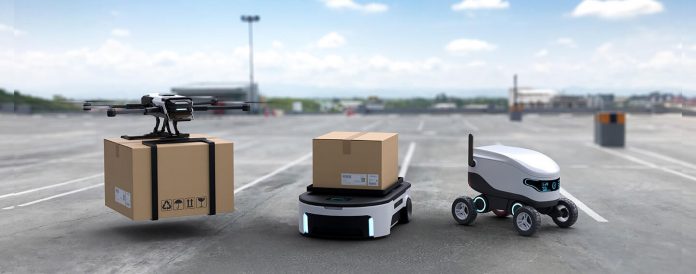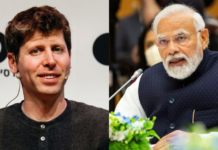To develop a set of safety criteria for the use of autonomous mobile robots in the urban environment, Continental and TUV SUD, a global provider of testing, inspection, and certification services, have announced a complementary partnership
Autonomous mobile robots (AMRs), in the manufacturing industry, have been making a huge impact. Use cases of AMRs have also been developed to support other industries apart from being used in factories and warehouses. For example, autonomous mobile robots can now be used in other industries as well, especially those that are facing a shortage of workers in light of the pandemic.
The success of autonomous mobile robots has also led to use cases being developed for use in public areas. In fact, for public use, a leading technology company Continental is now including these state-of-the-art solutions into its product portfolio.
Featuring the company’s industry-leading technology and software solutions, Continental Mobile Robots, a new era in the robotics industry, will be the first-ever intralogistics robot. Going to be introduced in September 2022, the AMR will also be the first in the market.
There are still many trials that are being conducted when it comes to enabling AMRs for public use, especially when it comes to safety. Singapore, which is expected to witness a boom in autonomous mobile robots for commercial use cases in the coming years, is also actively involved in these trials.
Currently, there has yet to be a city that has deployed autonomous mobile robots on a large commercial scale. There are also regulatory concerns apart from safety that are being studied, especially on the impact of autonomous mobile robots being used in public places. Singapore already has strict rules on micro-mobility vehicles like e-scooters and such. Hence it will be interesting to see how the rules apply to AMRs.
For now, to develop a set of safety criteria for the use of autonomous mobile robots in the urban environment, Continental and TUV SUD, a global provider of testing, inspection, and certification services, have announced a complementary partnership. The MoU serves to alleviate any safety concerns and enable massive AMR deployment in a complex and dynamic smart city, like Singapore.
For Tan Kiat How, Minister of State for Communications and Information & National Development in Singapore, the MoU is a sign of confidence in regulatory and safety regimes.
“The safe use of autonomous mobile robots, especially in public areas like footpaths, is also important for Singapore as we harness technological innovations to meet future mobility needs. I hope that the outcomes of this collaboration can be scaled to other cities around the world to support their smart city developments,” said the minister.
“We are very happy to have TUV SUD, a global partner, supporting us in different regions and various AMRs to not only comply with legislation but to also set the standards for AMR safety. We are currently executing our growth strategy with Singapore and the available ecosystem as one of our cornerstones for the AMR business,” commented Pierre Pomper, Head of Autonomous Mobile Robots at Continental.
“The rising trend of autonomous technology has increased the need for safety of AMR operations. With our expertise in robotics safety, industrial connectivity, and Operational Technology (OT) cybersecurity, we look forward to working with Continental to support new technological advances and develop a potential safety framework for AMRs in the market,” added Richard Hong, CEO of TUV SUD ASEAN.
Preparing autonomous mobile robots for public use:
With that said, teleoperation or controlling of an AMR from a remote location will be one of the first few scenarios to assess. As autonomous mobile robots are controlled remotely, the key criteria in such an operation would be latency, cybersecurity, and reliability. While 5G is expected to solve this problem, the reality is, the Land Transport Authority (LTA) mandates that the operator currently needs to follow the robot. With greater adoption and commercialization of AMRs in the future, one teleoperator could potentially manage up to 20 robots remotely and effectively reduce this cost by 20 times.
One of the projects on which Continental and TUV SUD are collaborating is a trial at the JTC Summit, whereby autonomous robots are used to fulfil last-mile delivery services. Working with JTC and LTA, robots developed by Continental will run on fixed routes, subjected to site-specific safety considerations, under a pilot to deliver food from the food and beverage outlets in Jurong East and the JTC Summit.
Robust safeguards are already in place during the trial as LTA requires trial autonomous vehicles (AVs) to undergo rigorous safety testing at the Centre of Excellence for Testing & Research of AVs – NTU (CETRAN) test circuit in Singapore’s Jurong Innovation District before they can be trialed on public roads and paths.
TUV SUD will work closely with Continental to assess various safety aspects of this trial and develop a set of criteria that can potentially be used as the safety framework for autonomous mobile robots deployed in cities around the world.
Also read: CIO News interviews Shri Wangki Lowang, Minister (IT) of Arunachal Pradesh
Do Follow: CIO News LinkedIn Account | CIO News Facebook | CIO News Youtube | CIO News Twitter
About us:
CIO News, a proprietary of Mercadeo, produces award-winning content and resources for IT leaders across any industry through print articles and recorded video interviews on topics in the technology sector such as Digital Transformation, Artificial Intelligence (AI), Machine Learning (ML), Cloud, Robotics, Cyber-security, Data, Analytics, SOC, SASE, among other technology topics






